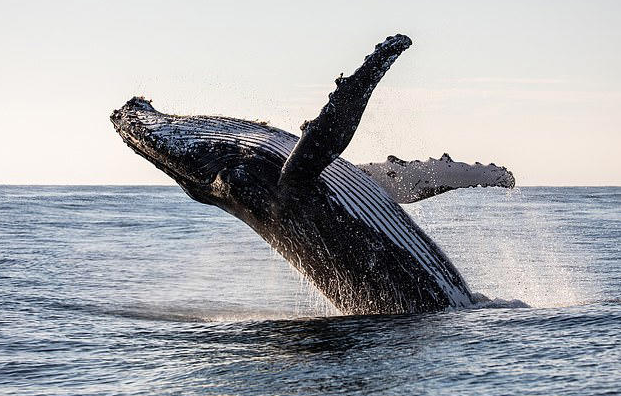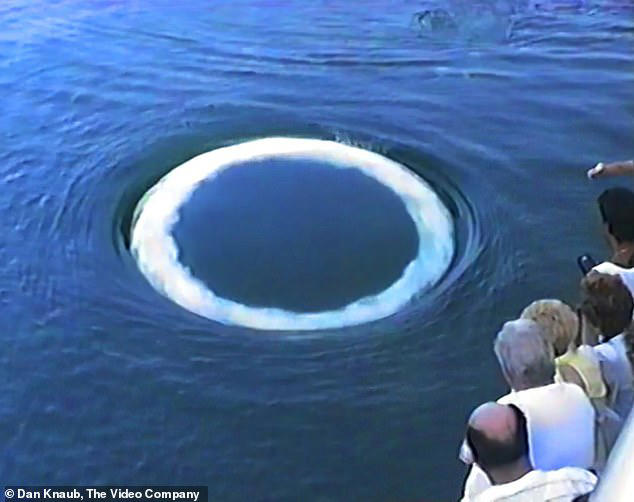Discovery of Underwater Communication Linked to Extraterrestrial Search
Scientists have uncovered the origin of an unusual form of communication in the ocean that may offer clues for locating intelligent life beyond Earth. Researchers from the SETI Institute (Search for Extraterrestrial Intelligence) have identified that large, smoke ring-shaped bubbles observed underwater are produced by humpback whales. These bubbles appear to serve as a playful greeting directed toward nearby humans.
Unique Whale Behavior Observed for the First Time

This marks the first time scientists have documented humpback whales releasing such distinctive bubble rings while interacting with people in the wild. The SETI team suggests that these bubbles represent a conscious effort by the whales to catch human attention, akin to a friendly “hello.” Previously, bubble rings were mainly seen during feeding or courtship activities, but this new behavior indicates whales might have been attempting to communicate with humans for years without it being studied until now.
#Animals Life
Implications for the Search for Extraterrestrial Intelligence
The researchers propose that understanding these bubble rings could enhance the search for alien intelligence by helping to identify unexpected signals from space that might otherwise go unnoticed. Dr. Fred Sharpe from the University of California-Davis, co-lead author of the study, explained, “They are blowing bubble rings in our direction in an apparent attempt to playfully interact, observe our response, and/or engage in some form of communication.”
Currently, the WhaleSETI team is investigating whether this behavior signifies that intelligent marine life is trying to communicate with humans, mirroring how extraterrestrial beings from distant oceans might attempt contact with Earth.
Clarifying the Origin of the Bubble Rings
Contrary to earlier speculations, the SETI Institute and University of California-Davis researchers confirmed that these large underwater smoke rings are created by humpback whales, not alien sources. The team emphasized that this discovery could refine the way scientists interpret unusual signals in space, potentially opening new avenues in the search for intelligent life.
Observations and Data Collection
Between 2019 and 2023, scientists documented 12 separate bubble ring events involving 11 individual humpback whales in their natural habitats. These rare observations were reported by naturalists, citizen scientists, and researchers via social media, interviews, and scientific gatherings. In total, 39 bubble rings were recorded from various vantage points, including whale-watching boats, research vessels, private yachts, and airplanes.
Contexts and Behavioral Insights
The study, published in Marine Mammal Science, identified three primary contexts in which humpback whales produced bubble rings: feeding, resting, and curiosity—the latter being the most frequent reason. In nine documented cases, whales blew bubble rings near boats and swimmers. During these interactions, the whales approached calmly, displaying no aggression but rather playful behavior such as tail splashes and water sprays from their blowholes.
Researchers interpreted these actions as signs that the whales were relaxed and comfortable, deliberately attempting to engage with humans.
#Animals World
Description of the Bubble Rings and Whale Interaction

The bubble rings, typically six to ten feet in diameter, are released through the whales’ blowholes and rise to the ocean surface resembling smoke rings. These bubbles were often directed at humans and accompanied by other playful behaviors like circling boats or observing swimmers closely. The whales did not exhibit fear or hostility and lingered after releasing the rings, as if waiting for a response.
Scientists believe these bubble rings might function as an invitation to communicate or play, similar to how children blow bubbles to attract attention.
Broader Implications for Understanding Intelligence
The SETI team suggests that this novel behavior supports the idea that intelligent extraterrestrial life forms might also attempt to make contact through curious, intentional signals. Dr. Laurance Doyle, co-author and SETI scientist, stated, “This important assumption is certainly supported by the independent evolution of curious behavior in humpback whales.”
By studying these marine interactions as examples of non-human intelligence, WhaleSETI researchers aim to develop methods to detect and interpret potential communications from extraterrestrial sources.
Hypothesis: Intentional Communication by Whales and Aliens
The institute hypothesizes that these bubble rings are not mere play but a deliberate effort by whales to communicate with humans they perceive as non-threatening. This behavior could parallel how aliens might direct signals to Earth’s satellite receivers if they sought contact.
Previous WhaleSETI Research on Whale-Human Communication
This is not the first time WhaleSETI has linked humpback whale behavior to the study of alien communication. In 2023, researchers engaged in a 20-minute interactive “conversation” with a humpback whale named Twain in Alaska. By playing whale calls and receiving responsive vocalizations, scientists demonstrated that whales can intentionally interact with humans. This finding provides valuable insight for SETI scientists studying potential extraterrestrial intelligences.
Linking Whale Communication to Drake’s Equation
The WhaleSETI team noted that their findings contribute to a broader understanding of how communicative intelligence might emerge elsewhere in the universe. By incorporating these behaviors into the context of Drake’s Equation—a formula estimating the number of detectable extraterrestrial civilizations—researchers hope to better predict where and how to find alien life.
Since curiosity and friendly engagement appear vital for communication among whales, similar traits may be necessary for alien civilizations to develop signals that humans can detect. This insight may refine SETI’s approach to searching for life beyond Earth.


















